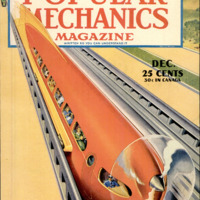Warplanes Made Difficult to See in Day and Night Sky
Item
-
Title (Dublin Core)
-
Warplanes Made Difficult to See in Day and Night Sky
-
Article Title and/or Image Caption (Dublin Core)
-
Warplanes Made Difficult to See in Day and Night Sky
-
Language (Dublin Core)
-
eng
-
Date Issued (Dublin Core)
-
1940-12
-
pages (Bibliographic Ontology)
-
876
-
Rights (Dublin Core)
-
Public Domain (Google digitized)
-
References (Dublin Core)
-
Europe
-
Archived by (Dublin Core)
-
Enrico Saonara
-
Alberto Bordignon (Supervisor)
-
Spatial Coverage (Dublin Core)
-
Europe
 Popular Mechanics, v. 74, n. 6, 1940
Popular Mechanics, v. 74, n. 6, 1940

